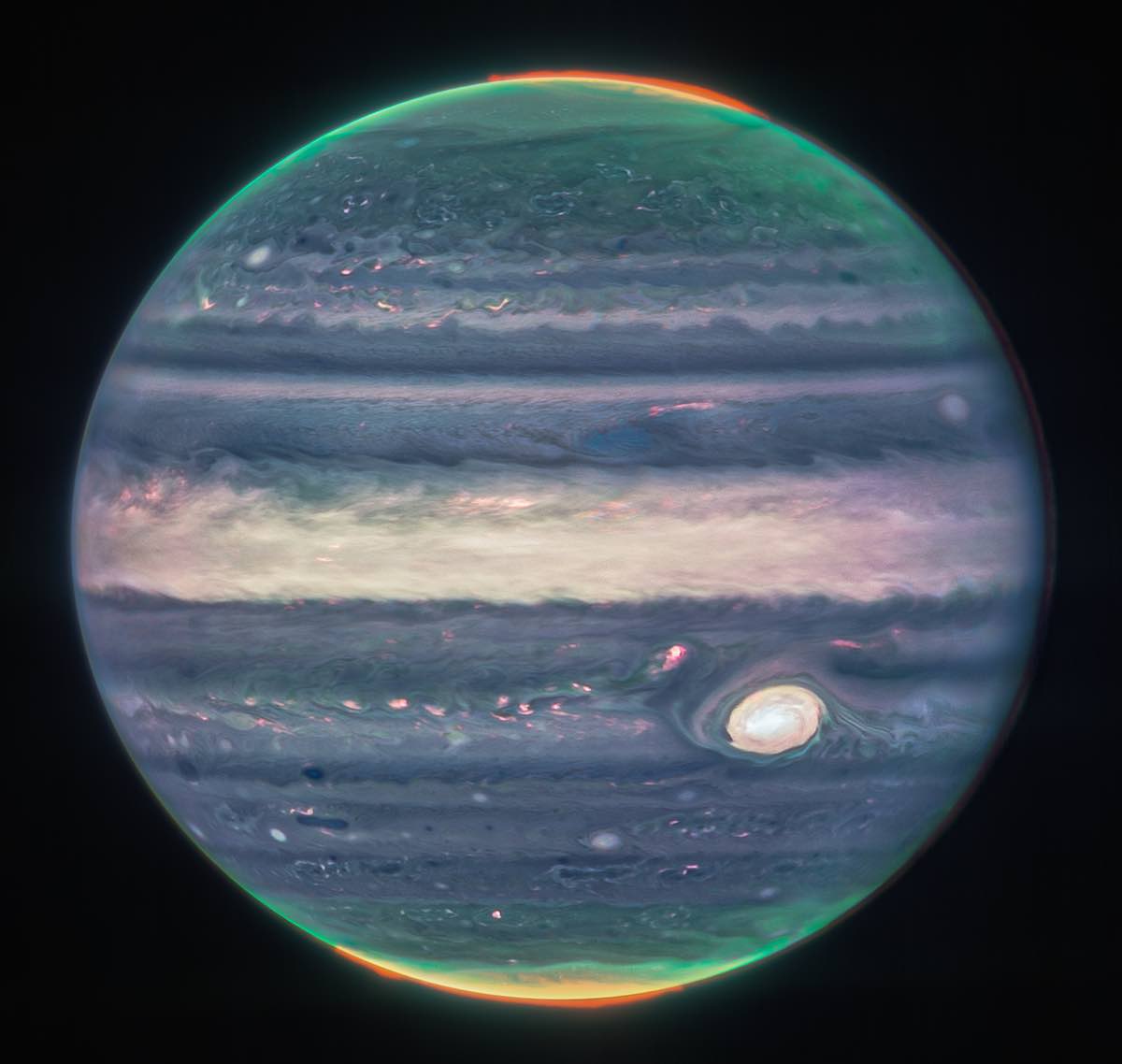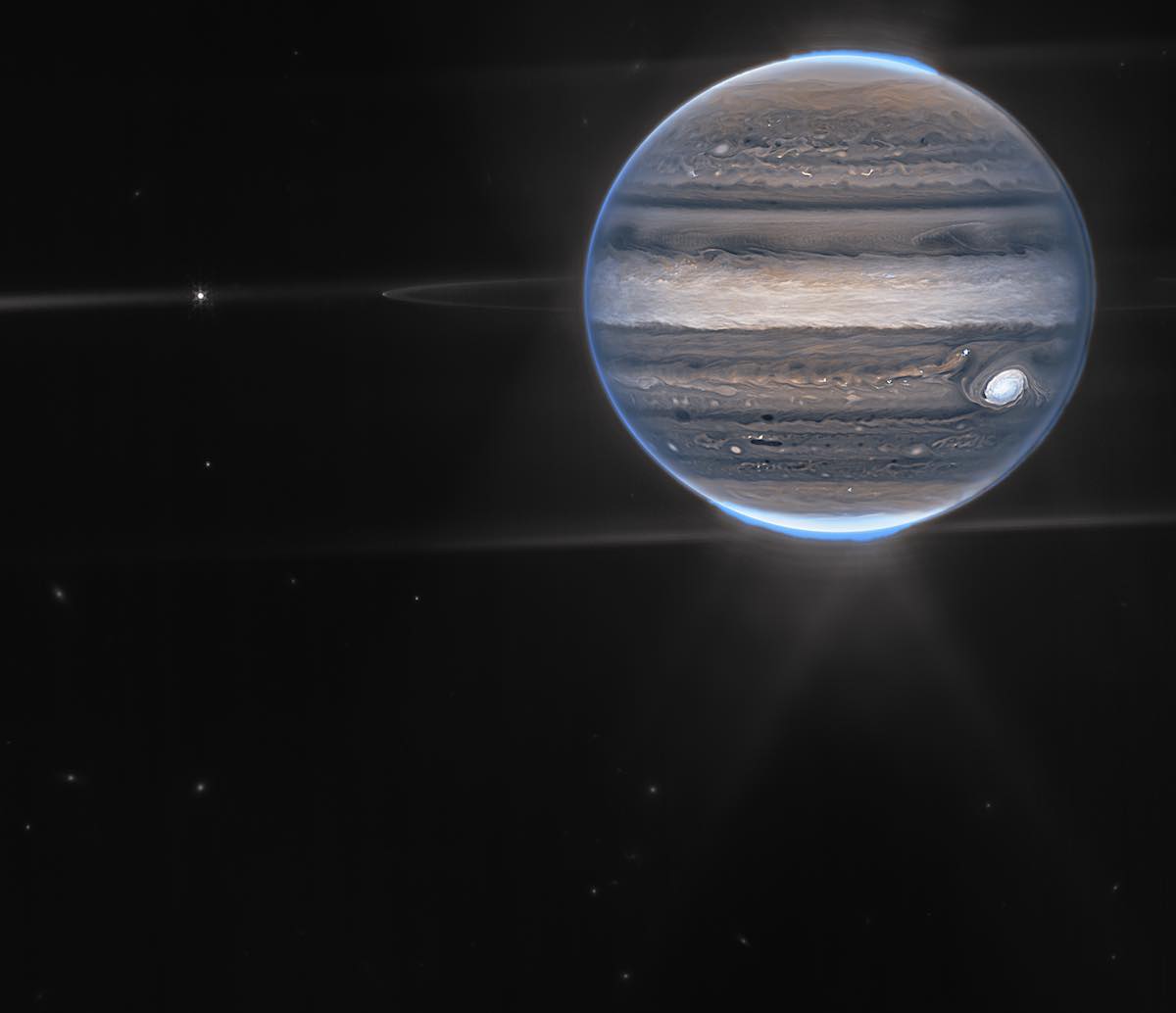
A few weeks after officially starting science operations, the James Webb Space Telescope turned its mirrors toward Jupiter and captured stunning new infrared views of the gas giant planet, its auroras, moons, and faint rings.
The images are Webb’s first official scientific observations of a planet in our solar system. Webb captured test images of solar system targets, including Jupiter, during the observatory’s commissioning campaign.
Scientists declared Webb ready for operational science observations last month, and the telescopes captured these views of Jupiter on July 27. The Jupiter images were released Monday.
“We’ve never seen Jupiter like this. It’s all quite incredible. We hadn’t really expected it to be this good, to be honest,” said Imke de Pater, a planetary astronomer and professor emerita at the University of California, Berkeley. “It’s really remarkable that we can see details on Jupiter together with its rings, tiny satellites, and even galaxies in one image.”
Jupiter’s Great Red Spot, a swirling cyclone bigger than Earth, appears bright white in images captured by the NIRCam instrument on the Webb telescope. The glow from auroras — northern and southern lights — emanate from Jupiter’s poles as the giant planet’s magnetic field interacts with charged particles streaming from the sun.
And in a wider view of the Jupiter system, Webb glimpsed two of Jupiter’s smaller moons, Amalthea and Adrastea. Fuzzy blobs seen below Jupiter and its rings are likely likely galaxies in the distant cosmos.

“This image illustrates the sensitivity and dynamic range of JWST’s NIRCam instrument,” said Thierry Fouchet, a professor at the Paris Observatory who partnered with de Pater on the Jupiter observations. “It reveals the bright waves, swirls and vortices in Jupiter’s atmosphere and simultaneously captures the dark ring system, 1 million times fainter than the planet, as well as the moons Amalthea and Adrastea, which are roughly 200 and 20 kilometers across, respectively.
“This one image sums up the science of our Jupiter system program, which studies the dynamics and chemistry of Jupiter itself, its rings and its satellite system,” Fouchet said in a statement.
The James Webb Space Telescope launched Dec. 25 on a European Ariane 5 rocket, deployed solar arrays, a tennis court-sized sunshield, and a 21.3-foot-wide (6.5-meter) primary mirror, and arrived in its operational orbit around a million miles (1.5 million kilometers) from Earth in January.
The $10 billion mission is a partnership between NASA, the European Space Agency, and the Canadian Space Agency. Officials released the first science images from Webb last month, showing distant galaxies and dramatic views of a star-forming nebula.
The Jupiter observations are part of Webb’s Early Release Science program.
“Although we have seen many of these features on Jupiter before, JWST’s infrared wavelengths give us a new perspective,” said de Pater in a press release from the University of California, Berkeley. “JWST’s combination of images and spectra at near- and mid-infrared wavelengths will allow us to study the interplay of dynamics, chemistry and temperature structure in and above the Great Red Spot and the auroral regions.”

The Jupiter images from Webb were processed by Judy Schmidt, a citizen scientist in Modesto, California. She has no formal education in astronomy, but has worked with data from the Hubble Telescope Telescope and other observatories to create dazzling cosmic images.
The processing work involved stitching together multiple images from NIRCam, which observes the universe in infrared filters to reveal light invisible to the human eye. The processing also had to take into account Jupiter’s fast rotation.
The mosaics released Monday show the infrared light mapped onto the visible spectrum, according to NASA.
Schmidt collaborated with Ricardo Hueso, a Spanish astronomer, on processing the wide-angle image that shows Jupiter’s moons and rings.
Email the author.
Follow Stephen Clark on Twitter: @StephenClark1.



